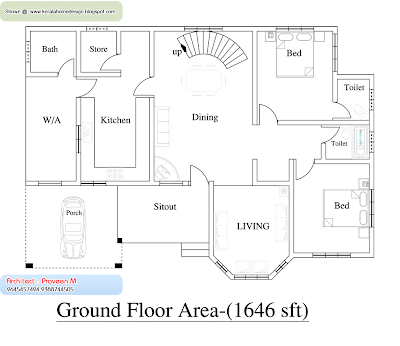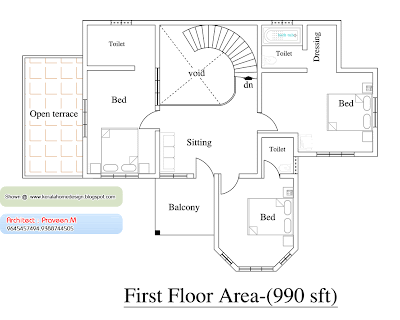The Story:
The birth of the vacuum cleaner is due to a number of advancements in science and technology brought about by the Industrial Revolution. By the mid 1800s factories were producing tens of thousands of manufactured items along with tons of pollution. Dirt and soot were everywhere. About that time scientist Louis Pasteur made several significant discoveries which led him to theorize that infectious diseases were caused by microorganisms or “germs.” Thus the development of the germ theory and the reaction against industrial pollution caused people to focus for the first time on hygiene and cleanliness.
The first vacuum cleaners had to be operated manually. Two persons were needed for sume machines were to large, one to operate the bellows and the other to move the mouthpiece over the floor. The dust was blown into the air. Prior to the introduction of "electric suction cleaners", most housewives used brooms and dust pans. Many of the mid-Victorian homes had large and small rugs and carpets on the floors of principal rooms. In order to remove dirt, dust and animal dander from the nap of these floor coverings, the rugs and carpets were removed from the home and beaten with a device similar to an oversized fly swatter called a rug beater.
Patent papers ( 29,077 US) have revealed that a vacuum sweeper was produced by Daniel Hess in July 10, 1860. Hess, a resident of West Union, Iowa, called his invention a carpet sweeper, not a vacuum. The machine did, in fact, have a rotating brush like other sweepers, however, the machine also possessed an elaborate bellows mechanism on top of the body to generate suction. The amazing thing about his machine was that it incorporated two "water chambers" to capture the dust and fine dirt. He states that the air is cleansed as it passes through the device. There is no record that this machine was every produced.
Another early model, the “Whirlwind,” patented (91,145 June 8, 1869) by Ives McGaffey of Chicago, created suction with a hand-cranked, belt-driven fan. All of these early vacuums were awkward, bulky, and expensive.
In the late 1870s, Melville Bissell began marketing his invention, a carpet sweeper with revolving brushes which picked up the dust and dirt and deposited it inside the sweeper housing. It depended on the rotation of the wheels to drive the sweeping mechanism and only removed debris from the uppermost regions of the carpet nap.
John S.Thurman invented his gasoline powered vacuum cleaner, in 1899 and some historians consider it the first motorized vacuum cleaner. Thurman's machine was patented on October 3, 1899 (patent #634,042). Later he started a horse drawn (door to door service) vacuum system in St. Louis, his vacuuming services were priced at $4 per visit.
The next technological leap in cleaning came in 1901, when Hubert Cecil Booth of London invented the electric vacuum. It was so large that its vacuum pump and motor were housed in a horse-drawn cart, from which a 100-foot long hose was extended and snaked into the house. This event was such a novelty that society ladies in England invited their friends over for vacuum parties! Queen Victoria’s carpets were cleaned this way, as were Britain’s naval barracks, ending a plague which swept through the Navy at the turn of the 20th century. The vacuum cleaner greatly improved sanitation and health. Tons of germ-laden dust were removed from theatre seats, home and shop floors.
At about the same time, two Americans introduced variations on the same theme. Corinne Dufour invented a device that sucked dust into a wet sponge. David E. Kenney’s huge machine was installed in the cellar and connected to a network of pipes leading to each room in the house. A corps of cleaners moved the machine from house to house.
In 1905 'Griffith's Improved Vacuum Apparatus for Removing Dust from Carpets' was patented by Walter Griffiths Manufacturer, Birmingham, England. It comprised of a portable and easy to store vacuum device which was powered by 'any one person (such as the ordinary domestic servant)' who would have the task of compressing a bellow type contraption to suck up dust via a removable, flexible pipe to which a variety of shaped nozzles could be attached.
Chapman and Skinner in San Francisco invented a moveable electric vacuum in 1905. It weighed ninety-two pounds and used a fan 18 inches in diameter to produce the suction. A woman needed her man to move the heavy vacuum around, giving new meaning to the term domstic togetherness. Because of its size and cumbersome nature, it did not sell well.
Best known for the vacuum cleaner that bears his name, Jim Kirby's life goal was to reduce or eliminate drudgery wherever it existed. After watching his mother's cleaning effort result in the dust settling back onto everything in the house, he developed his concept of a vacuum cleaner. His first cleaner, invented in 1906, used water for dirt separation. In 1907, displeased with the unpleasant task of disposing of dirty water, he went back to work and designed a system that used centrifugal action and cloth to filter the dirt.
James Murray Spangler, an inventor and janitor in Canton, Ohio, patented (889,823 June 2, 1908) the first portable electric suction cleaner, making life a bit easier and cleaner for the homeowner. An asthmatic, Spangler wanted a smaller vacuum to help keep down dust on the job. Using a variety of items — a broom handle, a pillow case, a tin soap box — he created a device that used motor-driven fan blades to create suction. In 1908 he sold the vacuum’s patent to his cousin’s husband, William Hoover, and became a partner in Hoover’s Electric Suction Sweeper Company. Soon many new vacuum companies sprang up, taking advantage of the growing popularity of electric appliances and of people’s fear of germs.
Detroit businessman Fred Wardell starts the Eureka Vacuum Cleaner Company, in 1909. Unlike their competitors’ vacuums, which were heavy, difficult to maneuver, and unreliable, Eureka’s vacuums were versatile and lightweight. The company offered several helpful attachments to clean upholstery, walls, and bare floors — even a blower to dry hair. Eureka’s vacuums were so well designed that they won an award at the San Francisco International Exposition in 1915. By 1919 Eureka was able to make 2,000 vacuums a day in their sophisticated, 3.5-acre manufacturing plant.
In 1910, two Racine, Wisconsin engineers, Charles Beach and Frederick Osius, and a master marketeer, Louis Hamilton, made household appliance history by inventing a small motor that ran on either AC or DC electrical power -- the first Great Leap Forward for plug-powered domestic machinery. Osius deployed this gem in a Hamilton Beach Mother's Little Helper -- the first portable vacuum cleaner.
After World War I, Jim Kirby agreed to design vacuum cleaners exclusively for George Scott and Carl Fetzer. Over the ensuing years, he developed numerous innovative cleaner designs. Later, the non-electric Vacuette model, manufactured by Scott and Fetzer, became the forerunner of today's multi-attachment models.
Air-Way Sanitizor of Toledo, Ohio.introduced the first vacuum cleaner with a disposable bag in 1920.
Aerus began in 1924 under the name Electrolux when Gustaf Sahlin introduced the Electrolux tank vacuum cleaner to the United States. Almost overnight, its unique design became the standard of excellence.
Hoover developed positive agitation in 1926, and this greatly increased the dirt removal efficiency of the vacuum. One model featured a rigid beater bar which was used in combination with the brush on the agitator to dislodge dirt from the carpet. In the 1930s the first plastic vacuum cleaners hit the market and headlights were added to some of the fancier models. In 1935, Scott and Fetzer introduced the Model C, the first of a long line of products to carry Kirby's name. Jim Kirby continued to work on new ideas for the company into the 1960's. The 1950s saw the introduction of the convertible upright line of vacuums. The first self propelled vacuums debuted in 1969. Since then, improvements such as higher speed motors have been added.
David Oreck starts Oreck Corporation as a company manufacturing upright vacuum cleaners for the hotel industry in the U.S. The concept was to design a lightweight yet powerful and durable vacuum that hotel housekeepers would prefer to the very heavy models available to them. The idea proved so successful that now over 50,000 hotels throughout the world use Oreck vacuums. After a short time, hotel personnel asked to buy the machines for their own use, which gave the Oreck Corporation the idea to sell its unique products to the general public.While Whirlpool was unable to make a success of its upright vacuum cleaners, Oreck believed that with a redesign of the machine, he could give it a new lease on life. So Whirlpool gave him exclusive rights to market them throughout the United States. The company also gave Oreck free reign to redesign the machine and then produced his prototype for him under the RCA Whirlpool label.
Between 1978 and 1993 James Dyson built 5000 prototypes before he perfected his Dual Cyclone machine. "This project is dead from the neck up". a Hotpoint, executive said when Dyson offered them his technology in 1982. In May 2001 Dyson had 29% of the vacuum cleaner market by volume and 52% by value.
It was iRobot’s 2002 foray into the home that is putting the company on the map. Helen Greiner says she and her colleagues knew that if they could find a way to relieve folks from the drudgery of household tasks, it would be a big hit with consumers. “For 13 years, when we introduced ourselves, people would say, ‘Can you make a robot that will clean my house?’” So the trio turned their attention to creating a robotic vacuum they could market for $200. Roomba is a small, disc-shaped vacuum that cruises around a room, using sensors to maneuver around furniture and avoid stairs.Indications are they did it right. Since its launch in September 2002, Roomba has been selling briskly and won the Good Housekeeping seal of approval. It was chosen as one of Oprah’s “favorite things” .
The vacuum cleaner is one of the greatest household aids ever invented. It’s right up there with sliced bread and the flushable toilet. Its speed and efficiency allows more time for leisure and less for cleaning. It’s obvious that the vacuum has an important and impressive pedigree. This reducer of pollutants, eliminator of germs, and status symbol shouldn’t be hiding in the closet, but should be proudly displayed in a place of honor in our homes!

















